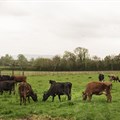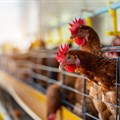In a bid to assist small-scale poultry farmers in improving their farming methods and revenue streams, the World Poultry Foundation (WPF) has introduced a new suite of training materials.
The WPF explains that small-scale producers are farmers who typically start with just a few birds in their gardens, but who later grow their flocks over time and start selling chicken meat and eggs in addition to producing for home consumption.
By following a few basic principles when it comes to rearing poultry, small-scale producers can reap benefits for their families in terms of improved poultry productivity.
These visual training guides aim to teach just that: each module covers core principles on key bird-rearing topics, such as poultry housing, health, water and feed and business planning, to help small-scale producers improve the nutrition of their households and grow their operations to be sustainable and profitable.
“Small-scale poultry producers play a crucial role in local food systems and rural economies, helping improve access to affordable, high-quality protein in rural areas through the production of chicken meat and eggs," says Randall Ellis, CEO of the WPF.
"We developed this series with an eye on the rural small-scale farmer: the materials are highly visual and thus suitable for a population with lower literacy, and the training is grounded in recommendations geared towards low-resource settings.
"Finally, our new training resources are available to farmers and organisations for free, showing our commitment to supporting inclusive and sustainable poultry value chains that benefit both farmers and consumers," adds Ellis.
The new training toolkits are especially designed to help new poultry farmers ensure their birds get the food, water and care they need to thrive so that the farmers can succeed and grow their businesses.
These new, convenient visual guides are designed to support the production of dual-purpose poultry, which are chickens that can be used for meat or eggs, and which are more resistant to disease than many other types of poultry.
The new educational materials cover the basics of poultry production, with practical information about improving flock health and welfare, managing feed and water, and implementing effective biosecurity measures.
The information has been prepared in user-friendly formats, including infographics, videos, and digital flipbooks for use at community meetings.
Ellis says: “The infographics could be printed and handed out, videos are dubbed in local languages, making them easy to show at a training or share on WhatsApp, and the flipbooks include a script for each page, making them ready-to-use for any community training.”
The content is available in English and videos are in English, Chinyanja, Mandinka, and Wolof.
The material will also be translated into additional languages in future, including Kiswahili, Fula, Serahule, Jola, and Lingala.
Ellis says: “The WPF invites organisations that support and train entry-level poultry farmers to share and make use of the content.”






































